Secondary Hypertension
Article Sections
Introduction
Secondary hypertension is defined as persistently elevated blood pressure resulting from an identifiable underlying anatomic or physiologic condition. It accounts for 5%-10% of hypertension cases and contrasts with essential hypertension, in which no underlying cause is apparent. Identifying and treating the underlying cause often can lead to improvement or resolution of hypertension.
Clinical features suggestive of secondary hypertension include the following:
- Onset at an early age (<30)
- Severe or resistant hypertension (ie, uncontrolled despite ≥3 antihypertensive agents)
- Abrupt onset of hypertension in a previously normotensive individual
- Evidence of end-organ damage at diagnosis
- Prominent symptoms such as palpitations, headache, and sweating
Major causes of secondary hypertension include the following:
- Renal parenchymal and renovascular disease: chronic kidney disease (CKD), glomerulonephritis, and renal artery stenosis
Continue Learning with UWorld
Get the full Secondary Hypertension article plus rich visuals, real-world cases, and in-depth insights from medical experts, all available through the UWorld Medical Library.
Figures
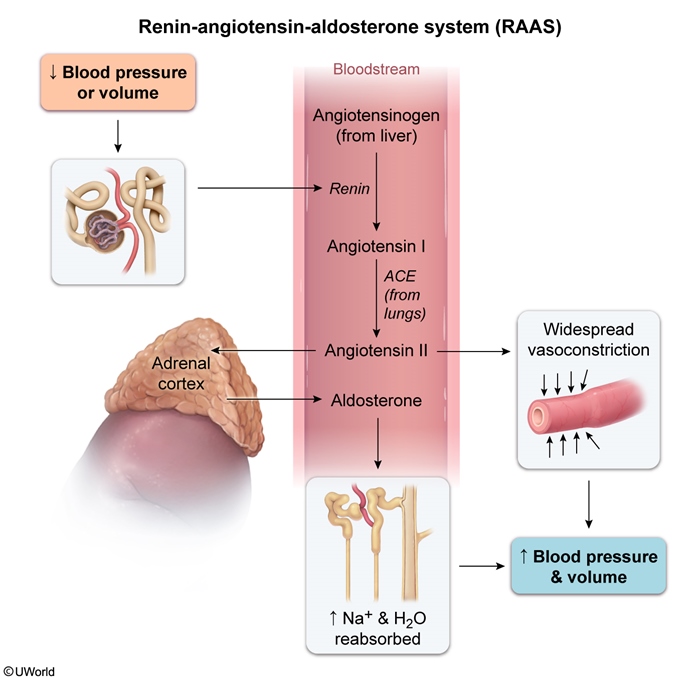
Figure 1
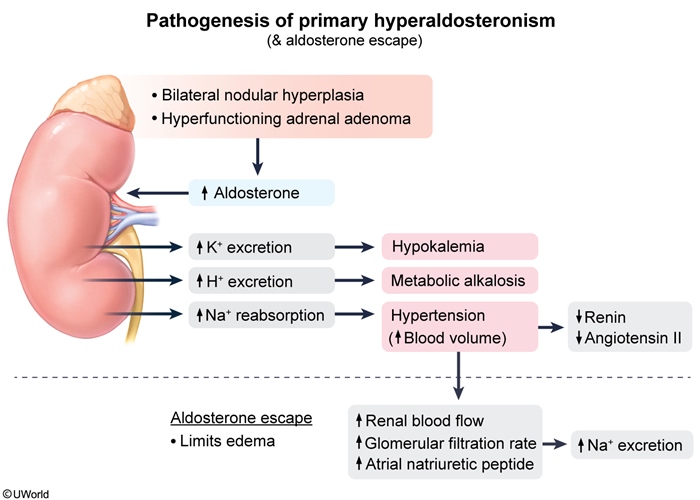
Figure 2
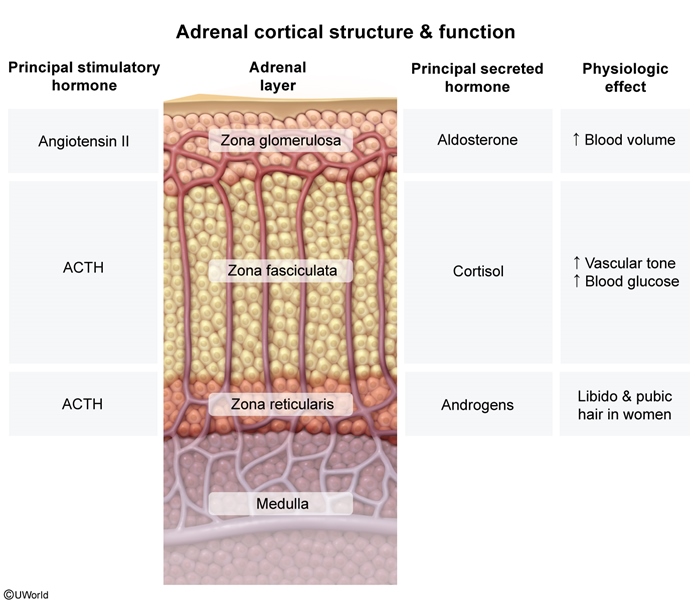
Figure 3
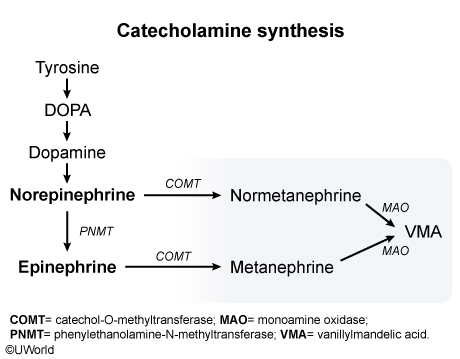
Figure 4
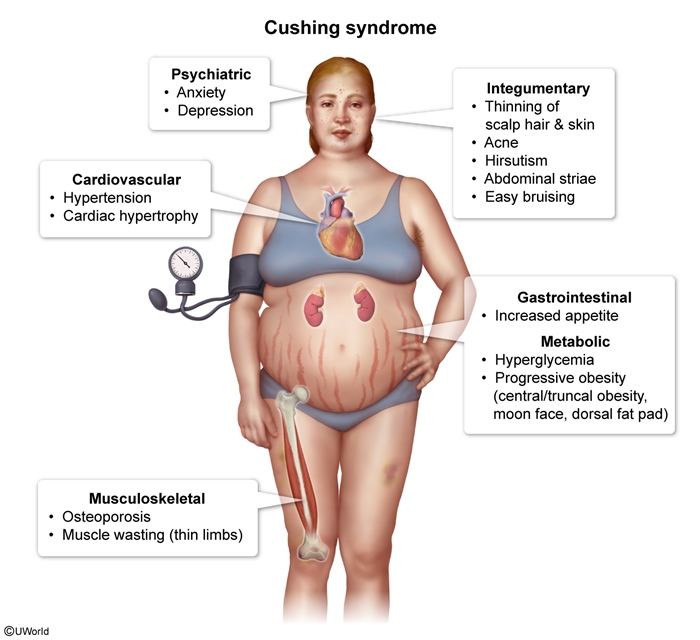
Figure 5
Tables
Table 1